Software Localization Challenges and Solutions [Guide]
Can Pepsi bring your ancestors back from the dead?
That's what Pepsi told the Chinese market when it launched its advertising campaign, "Come alive with the Pepsi Generation."
Pepsi spent time and money to make sure the translation was correct, but when it appeared on billboards around the country, they ended up with:
Good thing it didn't work as advertised.
How could they miss such a glaring error?
Well, continue reading to find out why software localization matters!
Want to drive your global growth in local markets?
We can help you drive global growth, better accessibility and better product quality at every level.
What is software localization?
Software localization is the process of adapting a web or mobile app to fit the language and culture of its users in different parts of the world. This step is crucial for companies looking to expand globally, as it can make the difference between thriving in a competitive market or struggling to attract users from various countries.
What is the process of software localization?
To go global, companies must first prepare their products for localization, a step known as internationalization (i18n). It involves preparing the software's code and interface to make it easier to adapt to different languages and cultures later on.
Once the groundwork is laid, the actual localization process begins, which often includes translating the content into different languages. After tailoring the software for a specific region, it is then tested and deployed in various markets.
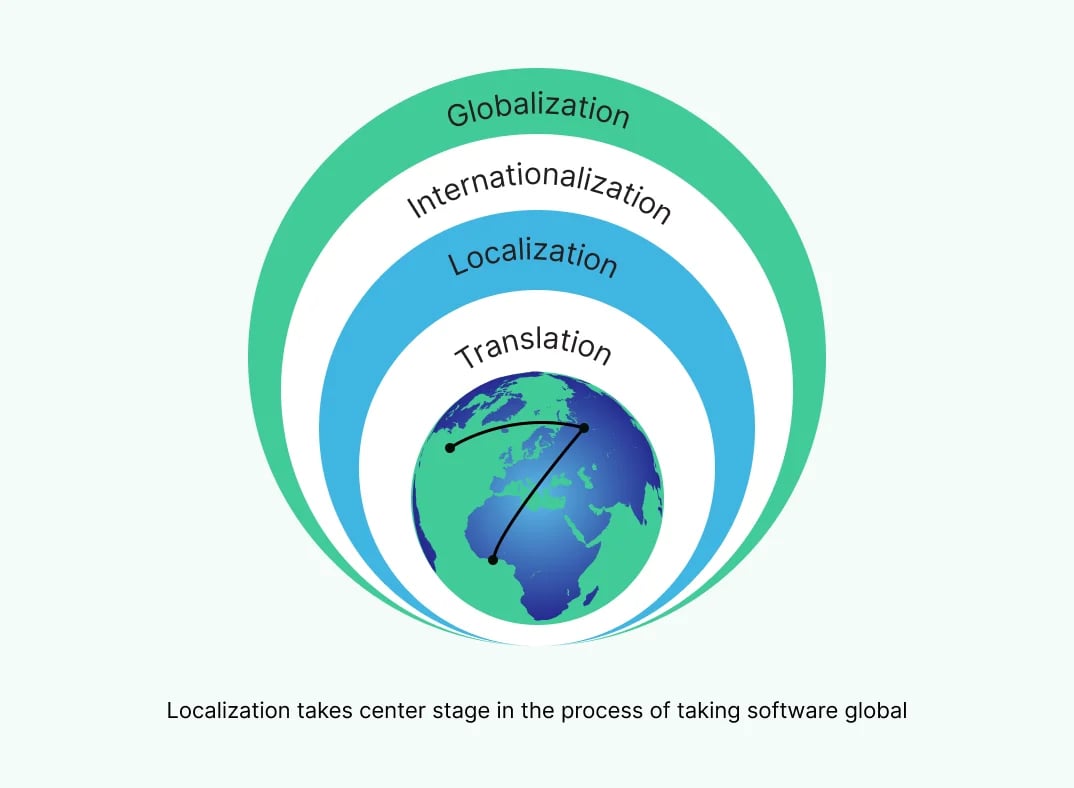
Today, localization is seamlessly integrated into the software development process, with translators working alongside developers to ensure that content is localized as soon as it's created. However, localization involves more than just translating text. It also takes into account cultural nuances and preferences, such as currency, units of measurement, and societal norms.
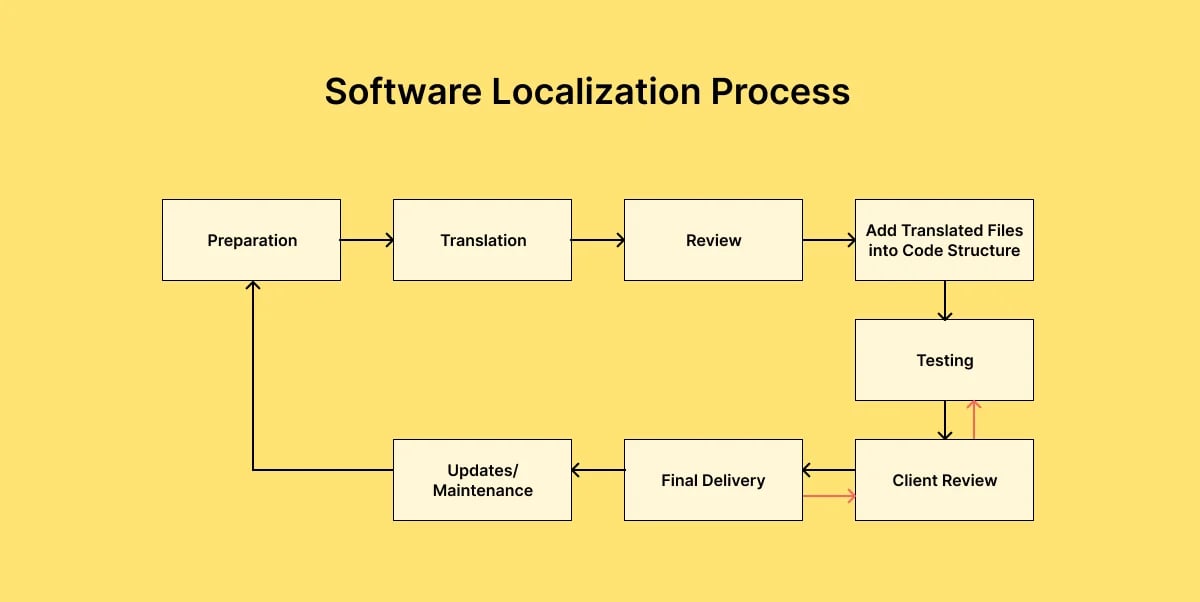
A well-localized software product feels natural to users in its target market, making it easy and intuitive to use. It's like setting up a device in a language you understand—it's effortless and straightforward. So, beyond just changing the language, localization also adjusts visual elements to create a familiar experience for users.
Pro tip
Global App Testing offers a comprehensive range of compatibility testing environments to ensure that your software is fully prepared for localization and capable of delivering optimal user experiences across diverse languages, regions, and devices.
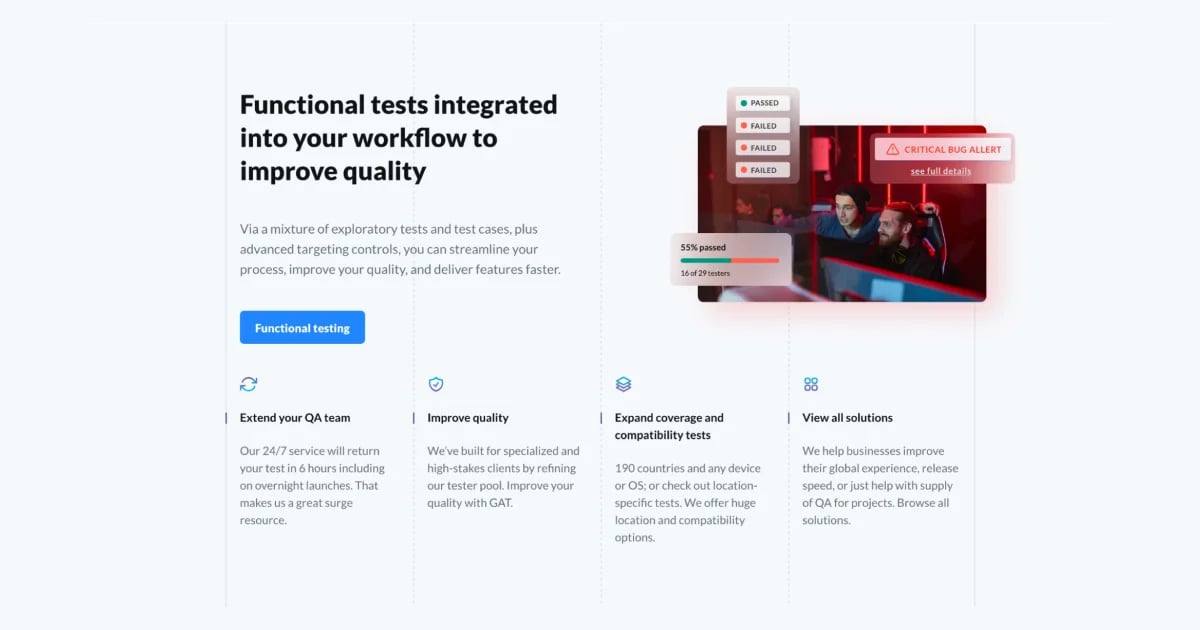
Who are software localization services for? - Quick checklist
Here’s a quick checklist to consider if the software localization services are for you:
1. Developers working on desktop applications
- Companies producing desktop applications must cater to markets based on location and language preferences.
- Compliance with strict regulations in certain countries, especially in government, life sciences, and financial sectors.
- Considerations: Market segmentation, language availability, regulatory compliance.
2. eLearning and Learning Experience designers
- Offering online learning experiences requires content to be accessible in the languages spoken by the target audience.
- eLearning content involves various formats like text, video, audio, and interactive elements.
- Considerations: Audience reach, content diversity, localization challenges.
3. Mobile app developers
- Digital marketplaces facilitate the global distribution of mobile apps, necessitating localization for diverse language speakers.
- Crafting apps with localization requirements in mind is essential for success.
- Considerations: Global distribution, localization readiness, user engagement.
4. Web app developers
- Web apps are becoming more interactive, blending website and software localization complexities.
- Continuous or agile localization practices are often required for web apps to function across different devices.
- Considerations: Interactivity, device compatibility, localization agility.
5. Metaverse and AR/VR application developers
- Augmented and virtual reality apps require localization in the emerging metaverse environment.
- Localization in metaverses emphasizes rigorous software testing due to unique interaction possibilities.
- Considerations: Emerging technologies, immersive experiences, testing requirements.
6. Software as a Service companies
- SaaS companies offer cloud-based software with unique localization challenges, including live software localization.
- Agile or continuous localization practices are common, necessitating close collaboration between localization, product, and development teams.
- Considerations: Cloud-based distribution, agile localization, live software challenges.
7. System integrators
- System integrators manage software ecosystems, often requiring localization for new markets.
- Compliance with local regulations regarding product and manual translations.
- Considerations: Software integration, legal compliance, localization accuracy.
8. Content providers - Localization as a feature
- Applications with user-generated content pose challenges for comprehensive localization.
- Embedding localization services facilitates the seamless translation of user-generated content.
- Considerations: User engagement, AI-driven localization, cost-effectiveness.
Why localization? 5 key benefits
Localized experiences deliver a product to the end customer that feels like it was developed for the local market. Despite initial costs, the return on investment (ROI) can be significant. Here are the key benefits:
1. Expanded user base: Targeting non-English speaking markets can significantly increase user acquisition and conversion rates, enhancing market reach and potential.
2. Accelerated time to market: Agile localization, with continuous collaboration between developers and localization teams, streamlines the release cycle, allowing for quicker deployment in multiple markets.
3. Increased brand awareness: Localizing content builds brand recognition and appeal, reduces advertising costs, and provides access to high-status opinion leaders, fostering brand loyalty and trust.
4. Enhanced customer loyalty: Offering content in users' native languages fosters respect and loyalty, leading to stronger relationships and increased customer retention.
5. Revenue growth: A more extensive user base, combined with personalized and localized user experiences, leads to higher revenue through increased sales, reduced churn, and positive word-of-mouth referrals.
Still not convinced?
According to CSA research:
- For every dollar a business invests in localization strategy, they earn another $25.
- Nearly three out of four customers (72.1 percent) spend most of their time on sites in their own language.
- Over half of consumers (56.2 percent) rate the ability to obtain information in their own language as more important than price.
The importance of localization for your organization is clear; if you want to expand outside of English-speaking countries, it must be part of your growth strategy.
Should you invest in localization management?
When you set out on the journey of software localization, it's wise to consolidate all efforts under a single team or, at the very least, assign responsibility to one individual. Bringing in a localization manager to oversee every aspect of the software localization process is highly beneficial.
In addition to serving as a liaison between software developers, product managers, the marketing team, translators, business executives, and other stakeholders involved in localization, a localization manager streamlines the workflow by establishing processes, tools, and guidelines. This process not only saves time but also reduces costs in the long term.
Case study: How GAT helped Canva with localization
Background
- Canva, with over 35 million monthly active users across 190 countries, faced challenges in ensuring its products catered to diverse linguistic and cultural needs.
Challenge
- Rapid international expansion demanded localization quality assurance (LQA) expertise to ensure product usability across varied markets.
Solution
- Global App Testing (GAT) provided reliable and scalable LQA testing, allowing Canva to focus on high-level strategy and implementation.
Result
- Expanded reach: Over 60% of Canva's users now come from non-English markets, indicating successful localization efforts.
- Improved retention: GAT's facilitation of localization contributed to user satisfaction and retention, which are crucial for a subscription-based business model.
- Time savings: GAT's management of LQA resources allowed Canva's team to focus on strategic initiatives and growth opportunities.
- Enhanced User Experience: By efficiently identifying and resolving bugs, Canva improved its international user experience and brand confidence.
Top 6 localization challenges to be aware of
In the case of Pepsi, though their translation might have been accurate, they missed the key factors of localization – to adapt a product, service, or website to the native language of the intended end user. The process includes many factors, such as:
- Language
- Pricing
- Gestures
- Adapting sign-up forms
- Custom user flows
- Different product offerings
- Customer success/support
- And much more!
We're going to look at the top challenges companies face with localization and how you can overcome them.
1. Inaccurate translation
Translation expansion and contraction:
- Ensuring that translated text fits within the screen's available space is crucial during software localization. Text expansion or contraction occurs when the target language occupies more or less space than the source language. For example, English to German text expands by 10-35%, while English to Finnish text shrinks by 25-40%.
Right-to-left language specifics:
- Localizing right-to-left languages like Arabic, Hebrew, or Persian presents unique challenges due to different text flow patterns. This variation can impact page layouts and user experience.
Accurate translation:
- Guaranteeing precise translation of all text is critical in software localization. While professional translators offer the best results, some opt for machine translations. However, machine translations, while improving, still require human review for accuracy.
Lack of context in translations:
- Context is vital for accurate translation, yet translators often work without sufficient context, leading to potential errors. Additionally, in-context translation features streamline the localization process by allowing translations directly within the app with the necessary context.
Formatting issues:
- Localization involves more than text translation; it requires accounting for formatting differences in dates, times, numbers, addresses, and currency conventions.
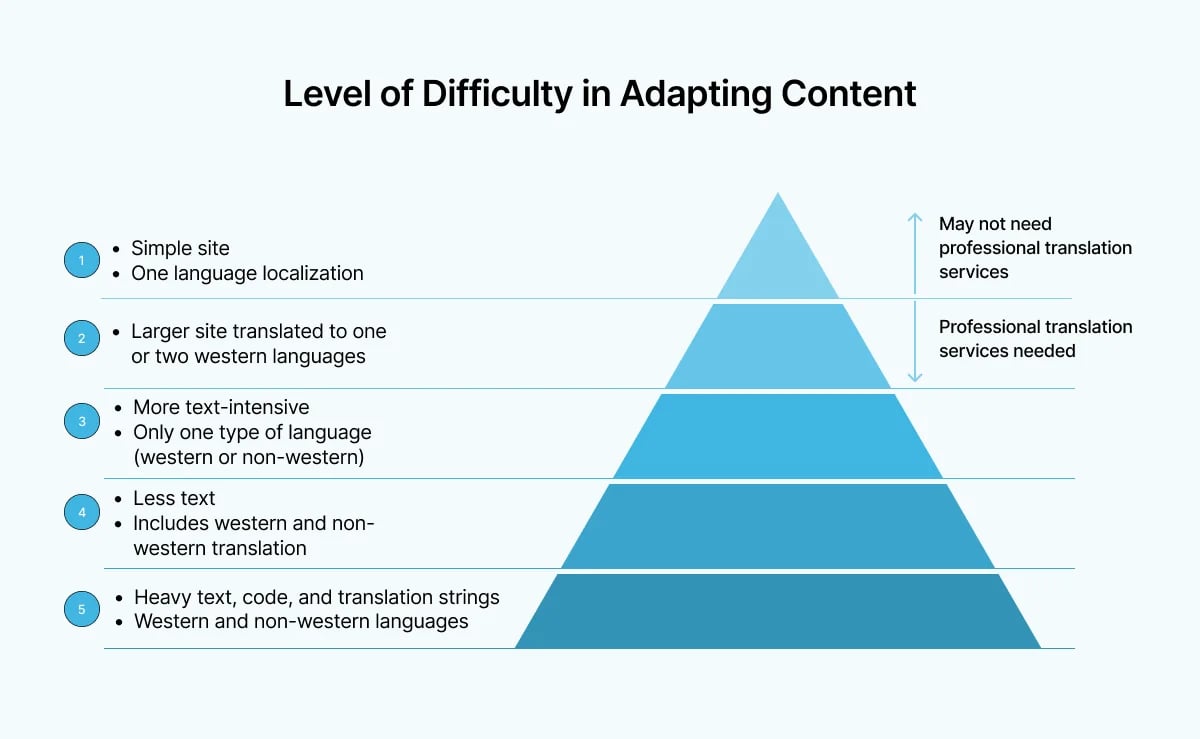
2. Slow time to market
Why is this the case?
- Localized products require resources to build.
- Localized services require customization.
- Localized testing with your target users requires resources.
- Learning about local market conditions takes time.
Localization is more than just translating languages –it involves choosing the right regional language and respecting cultural references. Neglecting these aspects can lead to disconnect rather than connection with the audience.
The key to good translations is working with experts who:
- Are native speakers in the target region.
- Have translation and industry experience.
- Follow a trusted translation process to catch mistakes.
To check quality, do linguistic testing for spelling, grammar, and cultural fit.
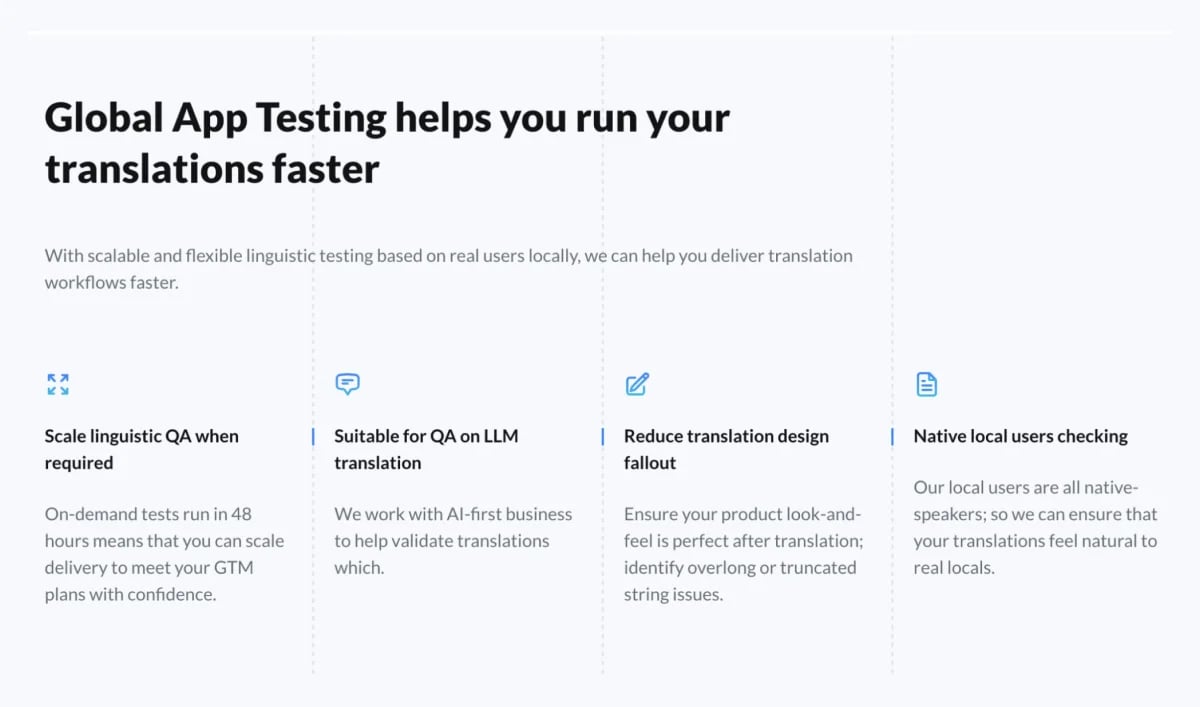
3. The process is too manual
To develop a localized experience for your target market, you need to learn about it. You'll have to use human testers to go through the localized customer journey so you can identify any gaps in the customer experience and where to improve things.
Once you've learned what you need to build or change about your product, you'll need to analyze and prioritize the efforts of various teams. These are all tasks that require manual effort—machines can't (yet) do this kind of information work.
4. The impact is difficult to measure
Localization has a direct impact on your bottom line. From growth to revenue, customers are more likely to buy and become engaged with a brand that connects with them personally.
To measure the impact of localization, you need to establish baseline metrics for the specific regions and countries in which you are deploying your efforts.
Deliver key metrics that support your business (aka your North Star Metric) to build executive-level support for the project. Here are the top business metrics IDG identified by executives if you need help determining what to focus on:
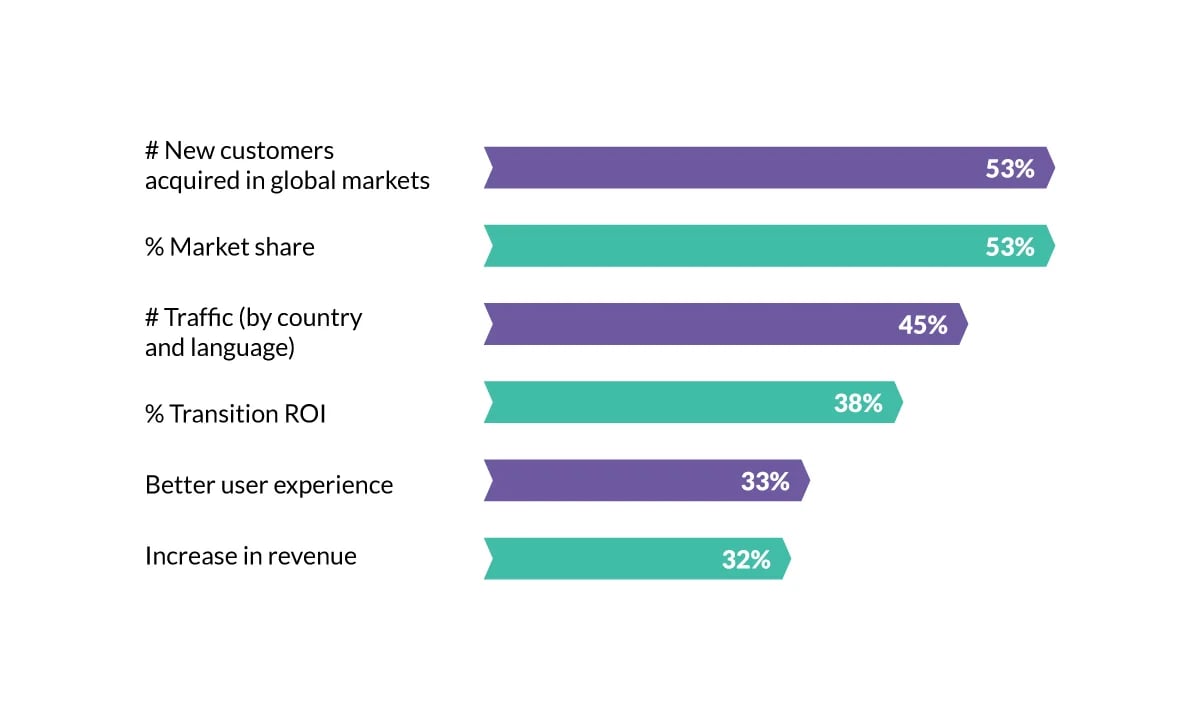
5. The process takes up too many internal resources
You can't do 100% of the localization efforts on your own - you need dedicated resources. Once you have these resources, though, deploying them to Beirut or Cairo isn't an effective use of their time.
The best way to alleviate this is to partner with someone who has global reach into the key target areas for expansion. Leveraging such a partner enables your internal team to focus on implementing and coordinating the changes to the products or services you provide.
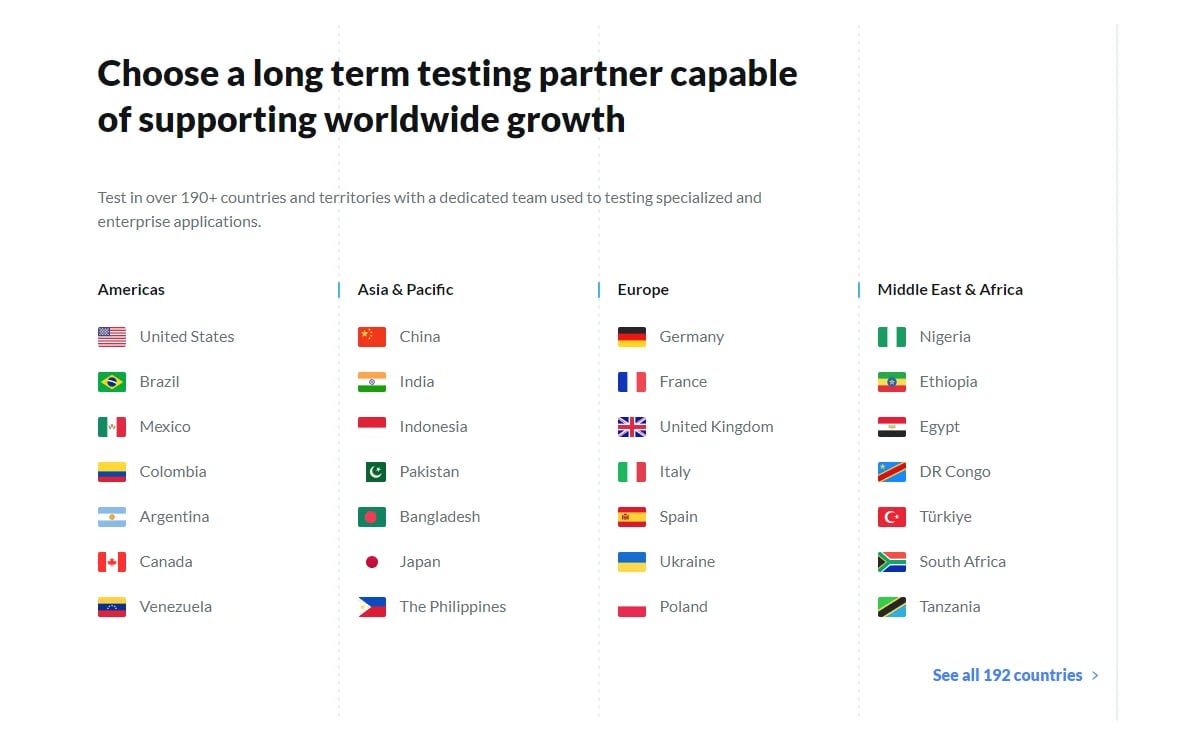
6. Use of AI
Integrating AI into localization processes presents a significant challenge and raises questions about its potential impact on the industry. As companies actively explore AI applications, particularly in localization, they recognize its potential to revolutionize existing practices effectively.
As the use of AI in localization progresses, it's anticipated to bolster productivity and redefine job roles, with professionals increasingly interfacing with AI tools rather than initiating prompts. Nevertheless, AI adoption faces hurdles, including cost implications and the imperative for transparency and control over AI-generated content.
How Global App Testing supports localization efforts
- We offer fast feedback within 48 hours, enabling thorough validation of localized software and content quality.
- Global app testing helps pinpoint localization issues affecting global users by testing various elements like logos and trademarks across diverse regions.
- With 48-hour translation checking by native speakers proficient in 160 languages, we identify and correct translation mistakes and ensure accurate localization.
- Ensuring design integrity post-translation is critical. Global App Testing verifies for any design errors or overlong or truncated strings, preventing potential user interface issues.
- The platform ensures seamless user experiences across all regions by validating access to the product and addressing data or censorship issues.
- Functional and integration testing ensures that local payment integrations and essential software functionalities work flawlessly across various use cases, enhancing user satisfaction.
- Testing compliance-oriented features guarantees adherence to local laws and regulations, instilling confidence in the software's legal compliance.
- With a presence in over 190 countries, we offer targeted testing in specific regions and languages, facilitating comprehensive QA, surveys, and compliance validation.
- Detailed test results, including videos/images, severity filtering, and easy reproducibility, provide actionable insights for efficient issue resolution.
- Rapid testing turnaround, including 24/7 launch capabilities and weekend testing options, ensures timely detection and resolution of localization issues.
- Testing under various network conditions and on diverse devices and OS versions ensures optimal performance and compatibility across user bases.
- Comprehensive testing extends to physical elements, such as printer connections, guaranteeing full software functionality in real-world scenarios.
Interested to learn more?
Schedule a call with our specialist today and make your product shine worldwide!
Want to drive your global growth in local markets?
We can help you drive global growth, better accessibility and better product quality at every level.
Keep learning
How to perform manual mobile testing
What is payment gateway testing? Everything to know
QA vs. Software testing - What's the difference?

